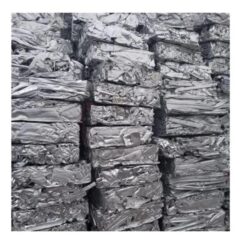- Need Help?
- Call Us : 888-5400-234
- info@europapermarkt.com
- Kraanstraat 10 Overpelt 3900 Limburg, Belgium
€90.00
Unveiling the Mystery of OCC 11 12, OCC 11, OCC 11 Waste Paper, and OCC 12: The Unsung Heroes of Recycling!
Have you ever wondered what happens to all that paper waste we generate? Well, it doesn’t just magically disappear! Thanks to the unsung heroes of recycling – OCC (Old Corrugated Containers), we can breathe a little easier knowing that our discarded cardboard boxes and packaging materials have found a second life.
OCC stands for Old Corrugated Containers – a classification used in the recycling industry to identify various types of cardboard packaging materials. Now, let’s break it down further.
OCC 11 refers to single-wall corrugated containers with a maximum moisture content of 10%. These containers are usually made from recycled fibers and can be found in items like shipping boxes or pizza boxes. They are lightweight and versatile, making them ideal for recycling into new paper products.
On the other hand, OCC 12 denotes double-wall corrugated containers that offer more strength and durability. With their thicker walls and higher compression resistance, they are commonly used in heavy-duty packaging applications such as appliances or furniture.
Now you might be wondering about “waste paper.” Well, it refers to any discarded or unwanted paper material that can be recycled. In this context, OCC waste paper specifically pertains to used cardboard packaging materials that are collected for recycling purposes.
Understanding these different classifications helps us better navigate the world of recycling and make informed choices when it comes to disposing of our cardboard waste responsibly. So next time you see those numbers on your packaging, you’ll know exactly what they mean!
When it comes to waste paper, OCC 11 and OCC 12 are two commonly used terms in the recycling industry. Let’s explore the pros and cons of using these types of waste paper.
Pros:
1. Availability: Both OCC 11 and OCC 12 are readily available in large quantities, making them a cost-effective option for businesses looking to recycle.
2. Recycling Benefits: Using OCC waste paper reduces the demand for new raw materials, conserves energy, and helps reduce greenhouse gas emissions.
3. Versatility: OCC waste paper can be recycled into various products such as cardboard boxes, packaging materials, and even building materials.
Cons:
1. Contamination Concerns: One challenge with using OCC waste paper is that it may contain contaminants like food residue or non-recyclable items. This can affect the quality of recycled products.
2. Limited Reusability: While OCC waste paper can be recycled multiple times before losing its fiber strength, there will come a point where it becomes less suitable for further recycling.
Alternatives:
There are alternatives to using solely occ 11/12 waste paper. Businesses can consider incorporating other types of recyclable papers into their operations such as mixed office papers or newspaper scrap.
While there are pros and cons associated with occ 11/12 waste paper usage, it remains an attractive option due to its availability and recycling benefits. However, considering alternative options alongside occ 11/12 could provide more flexibility in managing different types of recyclable papers effectively without compromising on sustainability goals!
While occ 11/12 is a popular choice for waste paper recycling, there are also alternative options that you can consider. Here are a few alternatives to occ 11/12:
1. OCC 13: OCC 13 refers to corrugated containers with a moisture content of less than five percent. This grade of waste paper is often used in packaging materials and has similar properties to occ 11/12. However, it may be more readily available and potentially more cost-effective.
2. Mixed Paper: Mixed paper refers to a combination of various types of paper, including magazines, newspapers, and office paper. While it may not have the same strength as occ grades, mixed paper can still be recycled into new products like tissue or newsprint.
3. Plastic Packaging Waste: In recent years, there has been an increasing focus on reducing plastic waste and finding sustainable solutions for packaging materials. By shifting towards using recyclable plastics or exploring alternative packaging materials such as biodegradable options, businesses can reduce their reliance on traditional waste papers like occ.
4. Digital Alternatives: With advancements in technology, many businesses are transitioning towards digital solutions wherever possible to minimize their carbon footprint and reduce paper consumption altogether. Embracing digital documents and processes not only reduces the need for waste papers but also offers efficiency benefits.
It’s important to evaluate your specific needs and requirements when considering alternatives to ocс grades for recycling purposes. Each option comes with its own set of pros and cons based on availability, cost-effectiveness, quality requirements, environmental impact considerations among other factors.
In conclusion,
Occurrence (occ) grades such as ocс 11/12 play a crucial role in the recycling industry by providing high-quality raw material for manufacturing new products from waste papers.
However,
it’s essential for businesses
to weigh
the pros
and cons
of using these particular grades,
as well as
consider alternatives
that may be more suitable for their specific needs




EURO PAPER MARKT is distributor, wholesale supplier and exporters of A4 Copy Papers in the worldwide market
Sign up for our newsletter to get updated information, promo, and insight about Paper news.